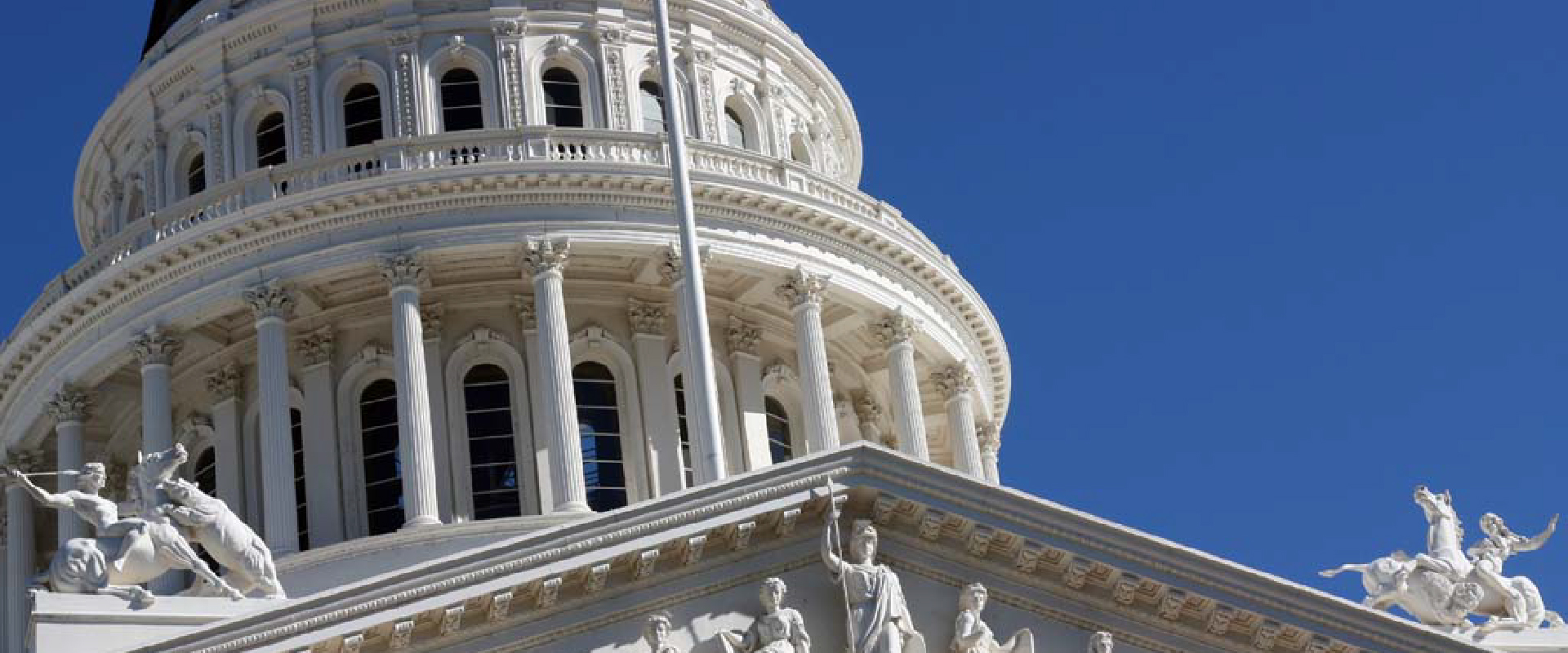CEQA Reforms: Legislature Adds Exemptions and Revises Review Process (Update)

On June 30, 2025, Governor Newsom signed two budget trailer bills, Assembly Bill (AB) 130 and Senate Bill (SB) 131, that include substantial and immediately effective changes to the California Environmental Quality Act (CEQA). These bills add new express exemptions and revise existing exemptions, streamline review procedures for certain projects, and narrow the scope of the administrative record for a CEQA project. The new exemptions are in addition to existing exemptions that remain available under CEQA for various projects.
On October 11, 2025, the Governor signed an additional bill, SB 158, that made further changes to CEQA, including cleaning up parts of the provisions added by AB 130 and SB 131, and appropriating $2,106,000 from the General Fund to the Governor’s Office of Land Use and Climate Innovation to support implementation of SB 131. Updates to this CNB based on SB 158 are identified in bold below.
New Exemptions
Urban Area Housing Development: A housing development project is now exempt from CEQA if it meets all of the following conditions:
Agricultural Employee Housing: Construction of agricultural employee housing is now exempt from CEQA if funding for that housing comes from specific sources.
Wildfire Risk Reduction: Projects that clear defensible space, create fuel breaks, and implement home hardening actions are now exempt from CEQA if they comply with specified size and distance requirements, include consultation with the Department of Fish and Wildlife, and avoid riparian and water quality impacts.
Linear Broadband Deployment: The existing CEQA exemption for broadband deployment is expanded to remove existing funding requirements and Public Utilities Commission approval. Additionally, the exemption clarifies which local entities can impose conditions and that a right-of-way includes local streets and roads.
State Climate Adaptation Strategy: Updates to the State Climate Adaptation Strategy by the Natural Resources Agency are now exempt from CEQA.
Parks and Trails: Planning, construction, and maintenance of parks and nonmotorized trails are exempt from CEQA if the project uses specified funds.
Advanced Manufacturing Facilities: Advanced manufacturing facilities, as defined in the Public Resources Code section 26003, are exempt from CEQA. “Advanced manufacturing” means manufacturing processes that improve existing or create entirely new materials, products, and processes through the use of science, engineering, or information technologies, high-precision tools and methods, a high-performance workforce, and innovative business or organizational models utilizing any of the specific technology areas, such as microelectronics and nanoelectronics, including semiconductors.
Day Care Centers: Day care centers that are not located in residential areas are now exempt from CEQA.
Food Banks and Pantries: Food banks and pantries operated by non-profits are now exempt from CEQA if the site is zoned exclusively for industrial use.
Rural Health Clinics: Rural health clinics or health centers are now exempt from CEQA if they are less than 50,000 square feet.
High Speed Rail Project: The development, construction, and modification of stations and maintenance facilities for the California High Speed Rail Project are now exempt from CEQA.
Procedural Changes and Other Reforms
Streamlining for Large Infill Housing Projects: Large infill housing projects that will cost over $100 million can qualify as “Environmental Leadership Development Projects,” which allows for a streamlined CEQA process, if they meet certain affordability, labor, and environmental conditions.
Narrowed Analysis for Housing Projects with a Single Condition: If particular, designated types of housing development projects would be eligible for an existing statutory or regulatory categorical exemption but for a single issue or aspect of the project that could have an environmental impact, the lead agency shall perform the initial study or environmental impact report focusing solely on that issue, and shall not include an analysis of project alternative, cumulative, or growth-inducing impacts. In addition to the categories of housing developments added by the Legislature that are eligible for this narrowed analysis, SB 158 clarifies that this narrowed analysis is for projects with a parcel size of four acres or less, as well as for projects with a parcel size over four acres that have not relied on certain other delineated statutory provisions for streamlining of projects.
Mapping Urban Infill Sites: The Office of Land Use and Climate Innovation (LCI) must prepare a map of eligible infill sites within every urbanized area of the State by July 1, 2027.
Updating CEQA Guidelines: LCI is also required to prepare updated guidelines on CEQA that will “address any rigid requirements, lack of clarity in vague terminology, and the potential for excessive exposure to frivolous litigation over lead agency determinations to make tiering under Section 21094.5 work more effectively in compliance with this division.”
Agency Communications Exempted From “Record of Proceedings”: The definition of “record of proceedings” used by CEQA litigants now exempts “electronic internal agency communications, including emails, that were not presented to the final decision-making body, other than those communications and documents consulted, or reviewed by the lead agency executive or a local agency executive, as defined in subdivision (d) of section 3511.1, or other administrative official in a supervisory role who is reviewing the project.” This is a change from prior court decisions that took a more expansive view on which email records must be included in the record of proceedings. You can find information on those court decisions in our Client News Brief, Public Agencies Required to Maintain Emails Related to CEQA Determinations.
New Definition of “Natural and Protected Lands”: The term, “natural and protected lands,” is used throughout CEQA, including as a means to limit when certain exemptions or conditions apply, including the narrow analysis for housing projects with a single condition, discussed above. Prior to SB 158, the term was defined as sites located within specified locations, including, lands protected as preserve areas or nature reserve lands. Going forward, the new definition for “natural and protected lands” now includes lands that are identified for conservation in an adopted natural community conservation plan, as provided, or other adopted natural resource protection plan.
Reconciliation of timelines: SB 158 reconciles the timeline for an agency decision to approve or disapprove a housing development project under the Housing Accountability Act with the timeline required for tribal consultation under the Permit Streamlining Act.
Appropriation from the General Fund to Implement SB 131: SB 158 appropriates the sum of $2,106,000 from the General Fund to the Governor’s Office of Land Use and Climate Innovation to support implementation of SB 131.
Takeaways
Taken together, the above provisions present significant changes to how local agencies perform CEQA analysis of projects. If you have any questions aboutSB 131, AB 130, or SB 158, or need guidance on how to implement these changes, please contact the authors of this Client News Brief or an attorney at one of our eight offices located statewide. You can also subscribe to our podcast, follow us on Facebook and LinkedIn, or download our mobile app.
On October 11, 2025, the Governor signed an additional bill, SB 158, that made further changes to CEQA, including cleaning up parts of the provisions added by AB 130 and SB 131, and appropriating $2,106,000 from the General Fund to the Governor’s Office of Land Use and Climate Innovation to support implementation of SB 131. Updates to this CNB based on SB 158 are identified in bold below.
New Exemptions
Urban Area Housing Development: A housing development project is now exempt from CEQA if it meets all of the following conditions:
- The site is within an incorporated city or “urban area.”
- The site is not more than 20 acres.
- The site was previously developed for urban use or at least 75 percent of the surrounding properties are developed with urban uses.
- The project is consistent with the local general plan and local zoning code standards.
- The project’s density must be at least 50 percent of the jurisdiction’s default density standard, which, in California, usually ranges from 10 units to 30 units per acre.
- The project does not require removal of historic buildings and formal invitation for consultation with Native American tribes is provided.
- No hazardous substances are found on the site.
- Projects within 500 feet of a freeway must meet additional air filtration and air quality requirements and cannot have balconies facing a freeway.
- Prevailing wages must be paid if the project is for all lower income housing.
- Housing projects exceeding 85 feet in height must comply with prevailing wage and “skilled and trained workforce” standards.
Agricultural Employee Housing: Construction of agricultural employee housing is now exempt from CEQA if funding for that housing comes from specific sources.
Wildfire Risk Reduction: Projects that clear defensible space, create fuel breaks, and implement home hardening actions are now exempt from CEQA if they comply with specified size and distance requirements, include consultation with the Department of Fish and Wildlife, and avoid riparian and water quality impacts.
Linear Broadband Deployment: The existing CEQA exemption for broadband deployment is expanded to remove existing funding requirements and Public Utilities Commission approval. Additionally, the exemption clarifies which local entities can impose conditions and that a right-of-way includes local streets and roads.
State Climate Adaptation Strategy: Updates to the State Climate Adaptation Strategy by the Natural Resources Agency are now exempt from CEQA.
Parks and Trails: Planning, construction, and maintenance of parks and nonmotorized trails are exempt from CEQA if the project uses specified funds.
Advanced Manufacturing Facilities: Advanced manufacturing facilities, as defined in the Public Resources Code section 26003, are exempt from CEQA. “Advanced manufacturing” means manufacturing processes that improve existing or create entirely new materials, products, and processes through the use of science, engineering, or information technologies, high-precision tools and methods, a high-performance workforce, and innovative business or organizational models utilizing any of the specific technology areas, such as microelectronics and nanoelectronics, including semiconductors.
Day Care Centers: Day care centers that are not located in residential areas are now exempt from CEQA.
Food Banks and Pantries: Food banks and pantries operated by non-profits are now exempt from CEQA if the site is zoned exclusively for industrial use.
Rural Health Clinics: Rural health clinics or health centers are now exempt from CEQA if they are less than 50,000 square feet.
High Speed Rail Project: The development, construction, and modification of stations and maintenance facilities for the California High Speed Rail Project are now exempt from CEQA.
Procedural Changes and Other Reforms
Streamlining for Large Infill Housing Projects: Large infill housing projects that will cost over $100 million can qualify as “Environmental Leadership Development Projects,” which allows for a streamlined CEQA process, if they meet certain affordability, labor, and environmental conditions.
Narrowed Analysis for Housing Projects with a Single Condition: If particular, designated types of housing development projects would be eligible for an existing statutory or regulatory categorical exemption but for a single issue or aspect of the project that could have an environmental impact, the lead agency shall perform the initial study or environmental impact report focusing solely on that issue, and shall not include an analysis of project alternative, cumulative, or growth-inducing impacts. In addition to the categories of housing developments added by the Legislature that are eligible for this narrowed analysis, SB 158 clarifies that this narrowed analysis is for projects with a parcel size of four acres or less, as well as for projects with a parcel size over four acres that have not relied on certain other delineated statutory provisions for streamlining of projects.
Mapping Urban Infill Sites: The Office of Land Use and Climate Innovation (LCI) must prepare a map of eligible infill sites within every urbanized area of the State by July 1, 2027.
Updating CEQA Guidelines: LCI is also required to prepare updated guidelines on CEQA that will “address any rigid requirements, lack of clarity in vague terminology, and the potential for excessive exposure to frivolous litigation over lead agency determinations to make tiering under Section 21094.5 work more effectively in compliance with this division.”
Agency Communications Exempted From “Record of Proceedings”: The definition of “record of proceedings” used by CEQA litigants now exempts “electronic internal agency communications, including emails, that were not presented to the final decision-making body, other than those communications and documents consulted, or reviewed by the lead agency executive or a local agency executive, as defined in subdivision (d) of section 3511.1, or other administrative official in a supervisory role who is reviewing the project.” This is a change from prior court decisions that took a more expansive view on which email records must be included in the record of proceedings. You can find information on those court decisions in our Client News Brief, Public Agencies Required to Maintain Emails Related to CEQA Determinations.
New Definition of “Natural and Protected Lands”: The term, “natural and protected lands,” is used throughout CEQA, including as a means to limit when certain exemptions or conditions apply, including the narrow analysis for housing projects with a single condition, discussed above. Prior to SB 158, the term was defined as sites located within specified locations, including, lands protected as preserve areas or nature reserve lands. Going forward, the new definition for “natural and protected lands” now includes lands that are identified for conservation in an adopted natural community conservation plan, as provided, or other adopted natural resource protection plan.
Reconciliation of timelines: SB 158 reconciles the timeline for an agency decision to approve or disapprove a housing development project under the Housing Accountability Act with the timeline required for tribal consultation under the Permit Streamlining Act.
Appropriation from the General Fund to Implement SB 131: SB 158 appropriates the sum of $2,106,000 from the General Fund to the Governor’s Office of Land Use and Climate Innovation to support implementation of SB 131.
Takeaways
Taken together, the above provisions present significant changes to how local agencies perform CEQA analysis of projects. If you have any questions aboutSB 131, AB 130, or SB 158, or need guidance on how to implement these changes, please contact the authors of this Client News Brief or an attorney at one of our eight offices located statewide. You can also subscribe to our podcast, follow us on Facebook and LinkedIn, or download our mobile app.
As the information contained herein is necessarily general, its application to a particular set of facts and circumstances may vary. For this reason, this News Brief does not constitute legal advice. We recommend that you consult with your counsel prior to acting on the information contained herein.







